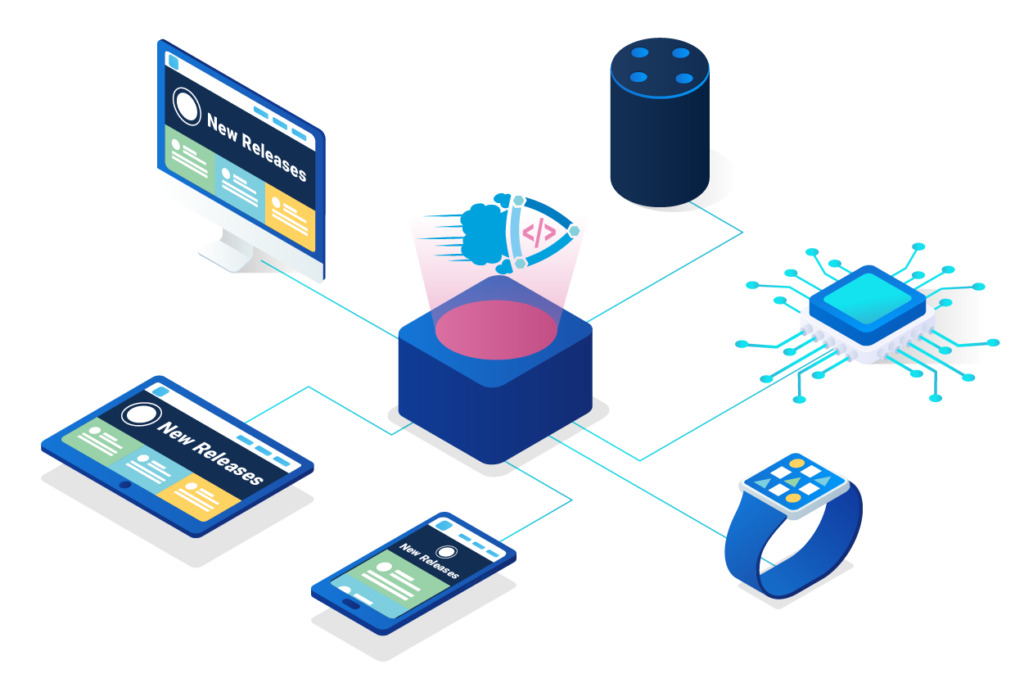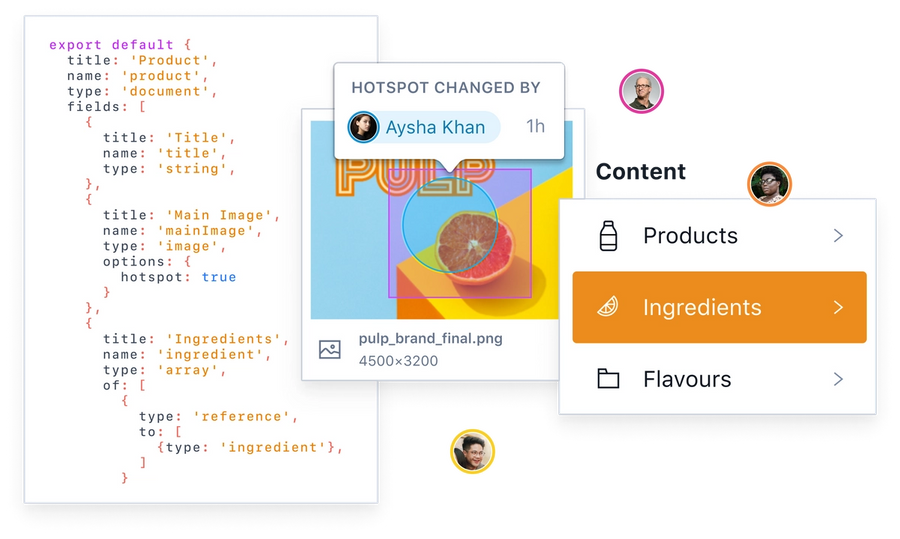
Headless CMS: the technology making waves in the APAC today
Despite the internet being a great democratic leveler for most businesses and organizations, it is still true that those with seemingly unlimited resources do have a significant advantage online over their smaller competitors. In many ways, that’s why we celebrate so-called disruptors — they are often the plucky underdogs whose technical ingenuity and business skills have allowed them not only to take a giant bite out of the dominant players’ market, but in some cases, to become the industry leader.
Behind these fantastic stories of the little guys making it big on the internet, there’s the reality for most — that staying competitive among the better-funded competition is a tough challenge, despite the great leveler that the internet undoubtedly can be.
In the areas of customer experience and creating bespoke customer journeys, it is only recently that the technical frameworks have evolved to allow smaller companies to compete alongside the market’s behemoths. One such technology is the headless CMS, a concept that requires some explanation and an area attracting the attention of many of the APAC region’s most forward-thinking and technically adventurous entrepreneurs.
Headless CMS in brief
In the early days of the internet (well before the age of apps), websites were almost always static. That is, content was hard-coded into the site. Making changes meant dialing into the back end of the site and hacking away with a plain text editor.
Dynamic websites were the next natural evolution. Powered by a database or several databases of some kind, these could adapt their content on-the-fly. Here, the CMS (content management system) provided a usable interface to the databases that supplied the content. Instead of posting data via complex SQL commands, even lowly content editors and creators could upload content to see it served by a single website.
Fast forward a decade or two, and a single website now seems like a pitiful offering in the great range of online offerings that companies and organizations use to advertise themselves. Among apps, websites rendered onto multiple smart-phone form factors, wearables, IoT devices (such as electronic billboards), a single website seems like a pitiful offering.
But headless CMS has the power to change all that. Imagine a content hub to which editors (and developers too — more of them later) can upload and edit content. The CMS can then serve its contents to multiple applications, web servers, distribution channels, and endpoints. That means one set of content is now multipurpose.
Naturally, that saves content creators a great deal of time, but the end-user or customer is the target that reaps the real benefits. Today’s customers demand high-quality experiences and those depend on the customer’s tastes — how do they wish to receive their content? On what platform? What is and what isn’t convenient?
Furthermore, the best headless CMS platforms also can dynamically respond to customer preferences and alter or adjust their output to provide proactive, hyper-personalized content throughout all customer-to-business interactions.
Developers too can create rich media interactions for end-users, and via smart APIs, end-users are served with content that is shaped and tweaked by code in real-time. For both content creators and creative developers, headless CMS solutions answer the dilemma of multiple platforms, delivery methods, and the myriad of customer tastes.
Here at Tech Wire Asia, we are looking at four providers of smart, headless CMS systems that have the power to change the ways that your organization communicates with customers. Whether via multiple apps for different platforms, dozens of bespoke websites for different product ranges & special offers, or a mixture of IoT, advertising, digital and rich media, headless CMS could well be your prayers answered.
DIALOGUE WISE
For businesses or organizations with a proactive, outward-focused approach to managing their customers’ experiences, Dialogue Wise is a logical choice. It offers companies a single place to which content creators, developers, marketing teams, and decision-makers can refer for all rich media and materials the company will use, regardless of context or language.
As assets are required by different apps, websites, online platforms, and even IoT devices, the Dialogue Wise platform repurposes its contents as needed. That means messages are always on-point, respecting geography, customer preference, and channel. Imagine the technology behind a responsive website to the power of ten: you are looking at Dialogue Wise.
Content creators and developers only need to publish (or code) once, and the platform does the rest. There are APIs and SDKs in common languages and frameworks, so app developers and website managers alike can call the same resources and get assets that are right for context and location in real-time — websites, apps, internet channels of all types. And as the business grows and changes, content creators can update any online presence without waiting for developers; conversely, devs don’t have to wait for a resized or re-coded media snippet — the platform is the workhorse for all asset-related aspects of the business’s activities.
You can learn how Dialogue Wise is helping its customers punch significantly above their weight here on the pages of Tech Wire Asia.

Source: Dialogue Wise
SANITY
Sanity comprises a single-page open-source interface designed to get disparate teams up and running in as short a time as possible. The platform enables organizations to have a single repository for images, text, and other media accessible by multiple teams and their members.
Privileges and roles determine editing levels — this is a truly collaborative space for creation. APIs manage all media in the backend of Sanity Studio, and even the editing environment is malleable so that it can be customized to individual tastes.
Queries to the back end that retrieve data are via the GROQ query language, and there are multiple APIs for patches, mutations, document joins, editing, deletions, and more.
Developers will recognize the version-control schema immediately, and this means that documents do not need to be locked during edits, with versioning done on the fly.
As you might expect from a scalable platform, all assets can be streamed and used according to use case. Low-quality placeholders and meta tags are used intelligently to ensure the fastest speeds in everyday production.
You can learn more about Sanity by reading more here.

Source: Strapi
STRAPI
Unlike paid-for, proprietary products, Strapi is fully open-source. It was initially designed as a tool for the open-source community — a common occurrence in open-source communities, where software gets developed to “scratch an itch”. In this case, it was designed as a collaborative platform for development and content production communities to share their output better.
As is the case with many open-source solutions, paid-for tiers offer virtually the same product, although with better support and access to helpful resources than the roll-your-own versions.
The platform is 100% JavaScript and includes role-based access privileges, internationalization and language capabilities (in the paid-for, enterprise tier), and full logging capabilities.
If your development team is happy noodling around in a WordPress backend, customizing the code layers therein for specific uses, then Strapi will be a simple-enough proposition. But unlike WordPress, this API-driven headless CMS is suitable for multiple use-cases, not just single websites. Apps, sites, rich media channels, and more are all included. You can download Strapi from its website or find it on Github to get started today.
CONTENTFUL
Contentful is pitching itself directly to large enterprises: its role-call of clients and its use of Gartner references point to that. Strongly focused on content creators, it also offers extensive documentation for developers and business decision-makers alike.
Content is re-usable and restructure-able, making it a single source of (literally) dynamic content. Updates no longer create backlogs for development teams that get bogged down in simple text edits better achieved by the content creators themselves. Instead, those skilled in code creation can do just that, while the content makers can use the back end to push real-time updates themselves.
As you might expect, compliance with data governance remains a high priority. Organizations with multinational presence will be grateful for the differing levels of data security available, so operating in different geographies, legally, is a snip.
To learn more about this high-end solution, check out Contentful’s own site.
*Some of the companies featured on this article are commercial partners of Tech Wire Asia
READ MORE
- Strategies for Democratizing GenAI
- The criticality of endpoint management in cybersecurity and operations
- Ethical AI: The renewed importance of safeguarding data and customer privacy in Generative AI applications
- How Japan balances AI-driven opportunities with cybersecurity needs
- Deploying SASE: Benchmarking your approach
